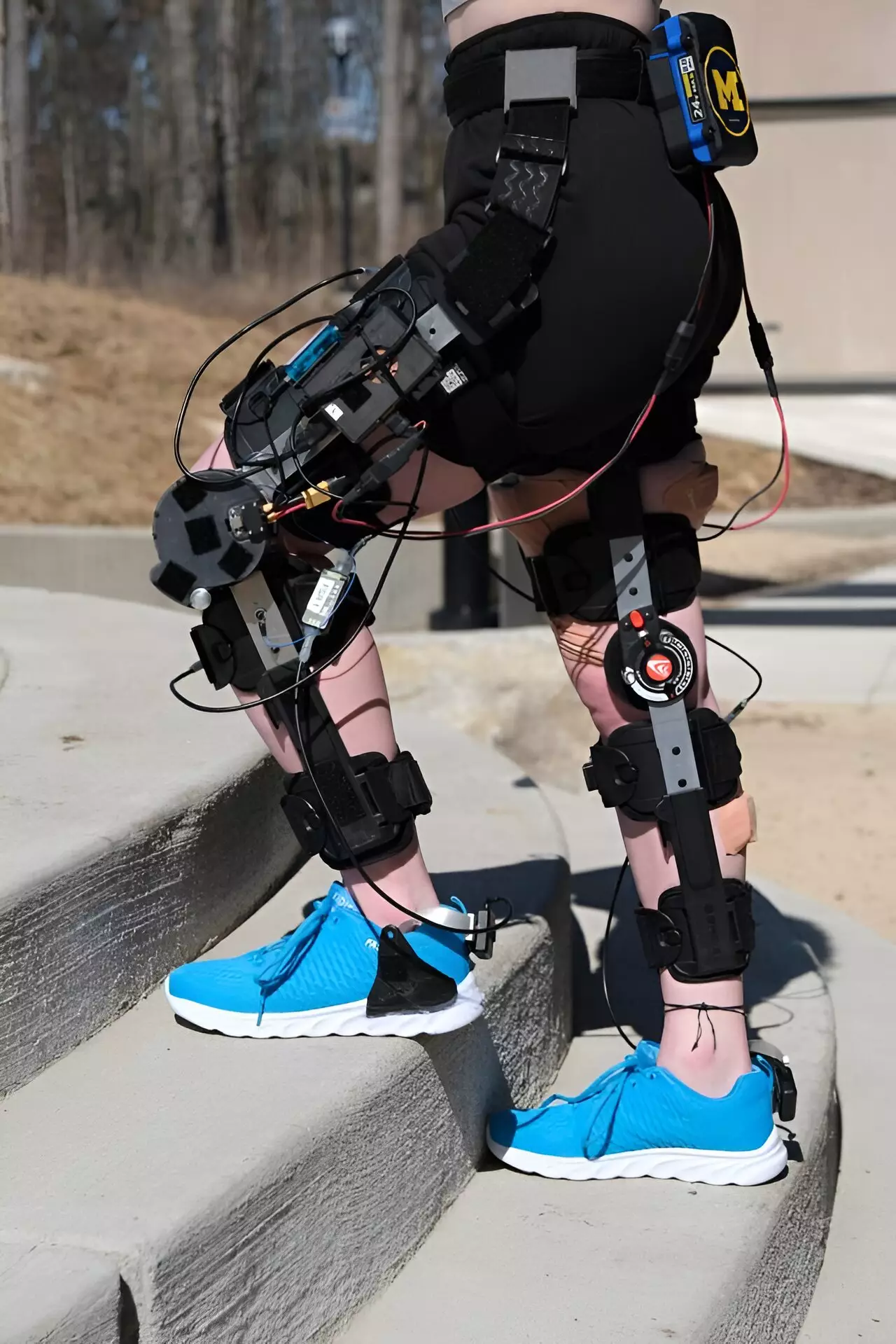In recent years, advancements in robotics and wearable technology have led to the development of exoskeleton systems designed to enhance human capabilities and reduce workplace injuries. A remarkable study conducted at the University of Michigan sheds light on a novel approach to assisting workers engaged in physically demanding tasks. By utilizing knee exoskeletons constructed from commercially available knee braces and innovative drone motors, researchers have created a system that helps combat fatigue and promotes safer lifting techniques. This article delves into the findings of their research, exploring the implications for labor-intensive industries.
Traditional exoskeletal devices often provide support via back braces, relying on mechanisms that aim to alleviate the weight-bearing load on the back. However, the Michigan team’s innovative designs focus on the quadriceps muscles, which play a crucial role in maintaining proper lifting posture. Unlike back exoskeletons that can be bulky and intrusive, the knee exoskeleton allows for natural movement and a more integrated user experience. “Rather than directly bracing the back and giving up on proper lifting form, we strengthen the legs to maintain it,” stated Robert Gregg, the lead researcher. This shift in focus presents a new paradigm for workplace safety without compromising mobility.
The study involved a relevant sample of ten participants, balanced in gender, who performed various lifting and carrying tasks using a 20-pound kettlebell. Researchers assessed participants in two distinct states: one where they were fresh and another where fatigue was induced through repeated squat lifts. Tasks included lifting the weight from ground level, navigating flat ground, and tackling inclines and stairs. The researchers aimed to analyze the exoskeleton’s effectiveness in maintaining functionality and posture during fatigue, a common issue in labor-intensive jobs such as construction and manufacturing.
Results from the study illustrated significant improvements in posture and efficiency for those utilizing the knee exoskeletons. Participants exhibited only a 1% reduction in lifting speed after fatigue when using the devices, compared to a striking 44% decrease without assistance. This finding emphasizes the exoskeleton’s ability to enhance performance under fatigue—an essential feature for workers who must meet the demands of a rapid-paced work environment, such as those operating alongside conveyor systems. As Nikhil Divekar, the study’s first author, pointed out, the ability to keep up with the expected pace while maintaining a safe posture is critical to reducing injury risk.
While the technical specifications of the knee exoskeletons are noteworthy, user satisfaction is equally important when evaluating the practicality of such devices in everyday applications. The majority of participants reported a high level of satisfaction when using the exoskeletons, particularly during the strenuous lifting tasks. However, they expressed mixed feelings when walking on level surfaces, acknowledging that the less demanding nature of that task necessitated minimal support from the exoskeleton. This feedback highlights the necessity of continual refinement in user interface design to maximize comfort and efficacy.
The seamless operation of the knee exoskeleton is largely attributed to its advanced motor systems and control software, which allows for natural knee movement. By incorporating machine learning and real-time sensor feedback, the system can dynamically adjust its support according to the user’s movements. This design contrasts sharply with traditional exoskeletons that often rely on inflexible, pre-programmed patterns. By taking over 150 measurements every second, the knee exoskeleton can adapt quickly to the user’s needs, presenting a more responsive and effective solution for varying lifting tasks.
Financial considerations are vital when discussing the potential market for knee exoskeletons. The current prototypes are estimated to cost around $4,000 per pair, but should mass production occur, analysts speculate that this price could drop to $2,000, making the technology more accessible to industries at high risk of injury. The researchers are actively pursuing patent protection and seeking industrial partners to facilitate the transition from prototype to practical application.
Innovations in knee exoskeleton technology represent a significant leap toward enhancing worker safety and efficiency in demanding industries. By addressing both the physical and ergonomic challenges of lifting tasks, these devices stand to revolutionize the approach to injury prevention. As the technology continues to evolve, it offers the promise of a future where workers are better equipped to handle the physical demands of their jobs, minimizing risk while maximizing productivity. The work being conducted at the University of Michigan not only paves the way for safer workplaces but also marks a vital progression in the integration of robotics into daily human activities.

